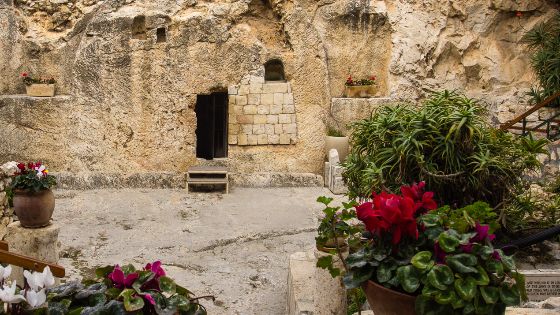
We know that Joseph of Arimathea was a wealthy person (think of the 100 pounds of spices!). So his burial plan would not have been the everyday ‘dug’ trench or built up ‘cist’ grave but a rock-cut tomb as is familiar around Jerusalem. It was clearly a place that one entered.
Apparently the rich in the first century BC began copying the Persian / Egyptian influenced tombs at Marisa. Here’s a photo I took there in 2013.
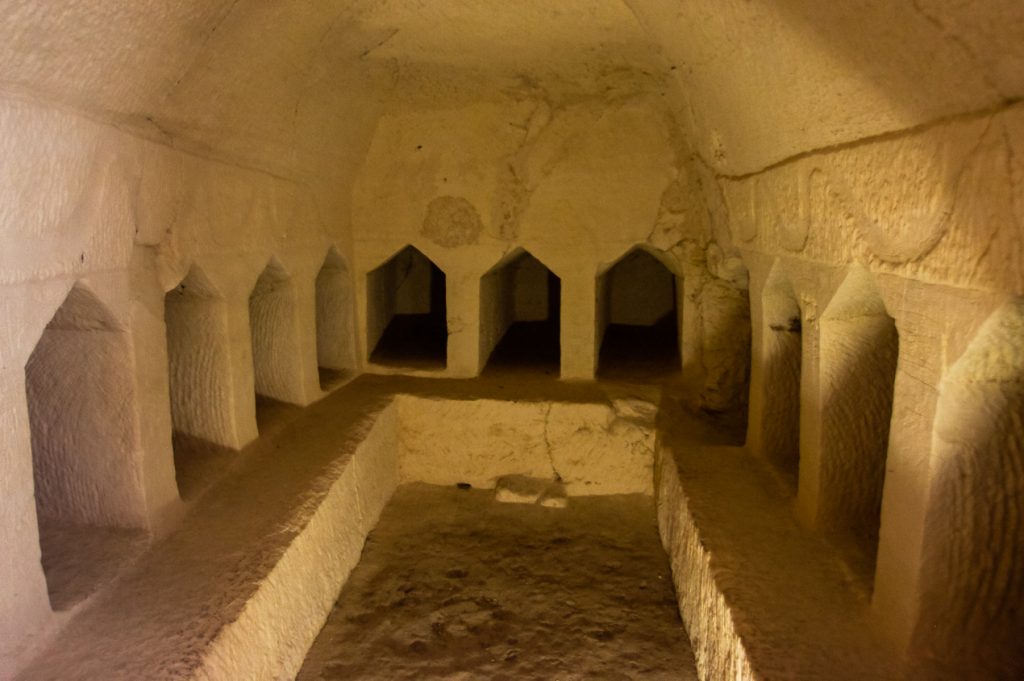
The dead were placed in coffins in the side shafts (loculi / kokim). The bones were gathered later but left loose in the niches. One body to one niche.
We know that people in Jerusalem used kokim shafts for their dead. Here is a picture of some a few metres away from the traditional site of Joseph / Jesus’s tomb in the Church of the Holy Sepulchre.
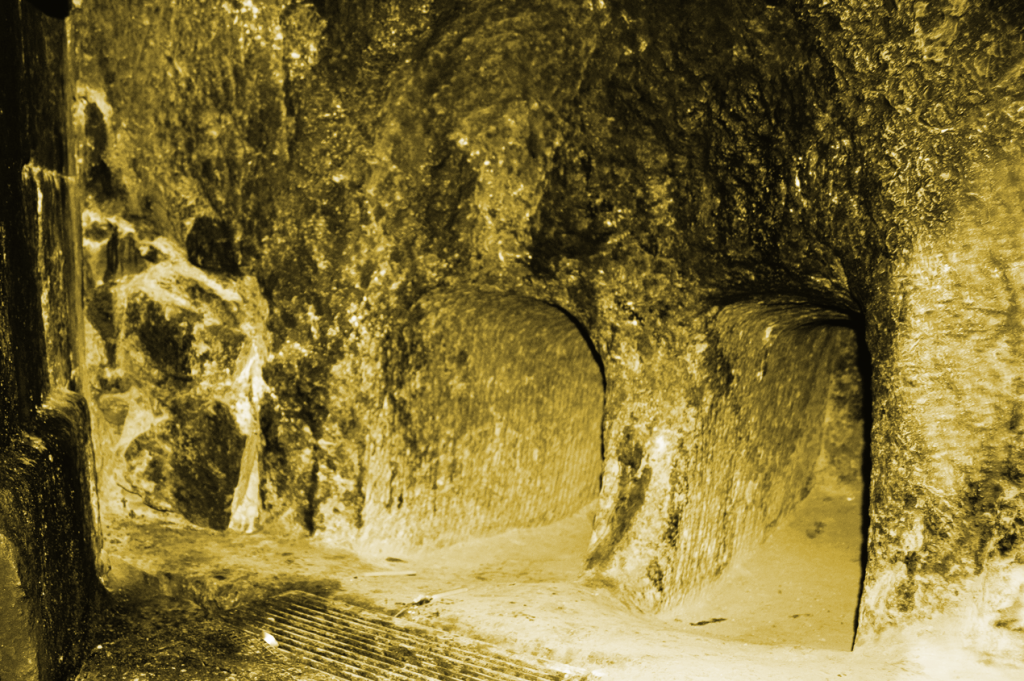
So it is entirely reasonable to believe that Joseph / Jesus’s tomb included kokim. It would seem that they did not use coffins, but shrouds.
However land was at a premium even in those days in Jerusalem and at one shaft per body, tombs soon filled up. Some of the Judean elite adopted the habit of collecting the bones after decomposition and placing them in ossuaries. (Saducees who had no doctrine of resurrection were less concerned about their remains, Pharisees on the other hand who did believe in resurrection wanted to keep their bones unmixed and saw their tombs as a way of re-enforcing their reputation and regard). Using ossuaries the shafts could then have multiple occupants. This had the advantage that many generations could be remembered within a restricted area. Here are many ossuaries found together on the Mount of Olives:
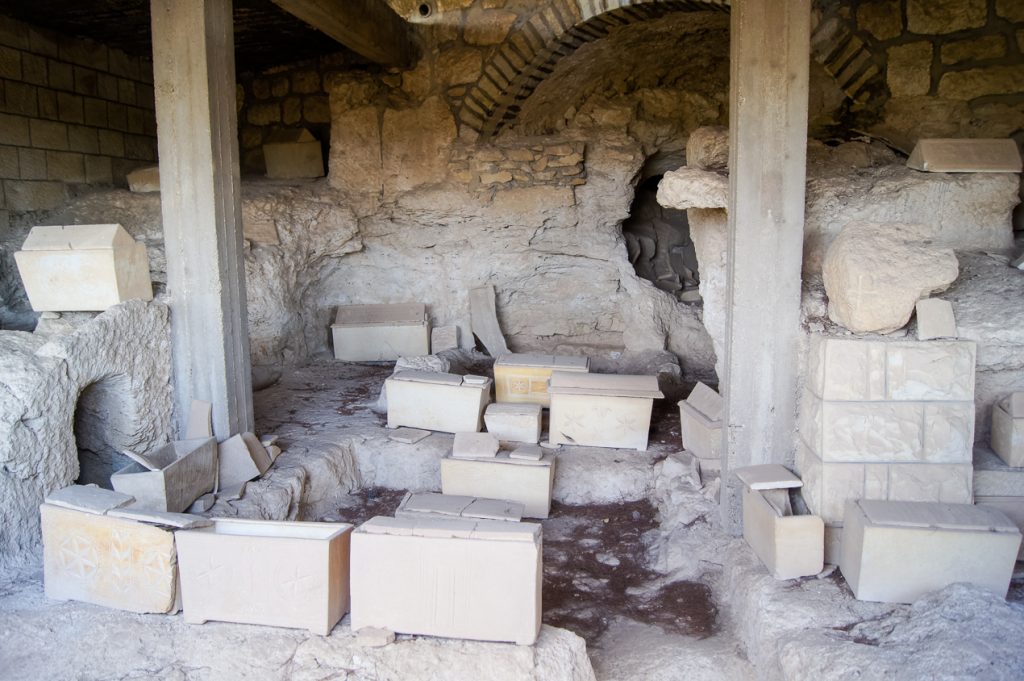
Corpses might be laid out in a kokh (primary burial) and then after a year the bones were collected, put in an ossuary and re-placed in a kokh (secondary burial).
In 1980 a tomb was discovered by accident at Talpiot, S Jerusalem. This is a plan showing how the niches were linked in an entire tomb (unlike the Church of the Holy Sepulchre -where the kochim have lost their context.)
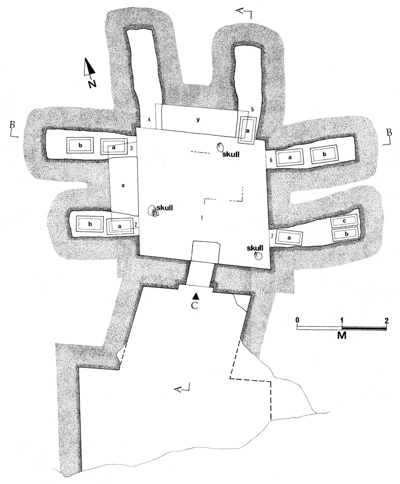
Although there is some controversy about what was found where – it is generally accepted that ossuaries were found in the niches, as marked (a, b…).
But what this complex also shows us are arcosolia. These are two arched shelves (marked X and Y in plan) for the laying out of the corpse – see photo.
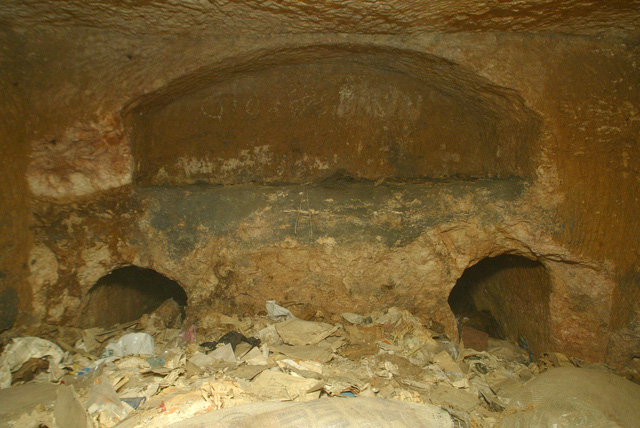
As a wealthy person it is very probable that Joseph’s tomb was large enough for there to be similar arcosolia – which would have been where Jesus’s body was laid (rather than the open central area as in the Nicanor Tomb).
Perhaps the linen clothes were left on the floor, and the face cloth on the shelf? As you can see from the plan there would have been room enough for two or three people to be inside, once beyond the very small opening .